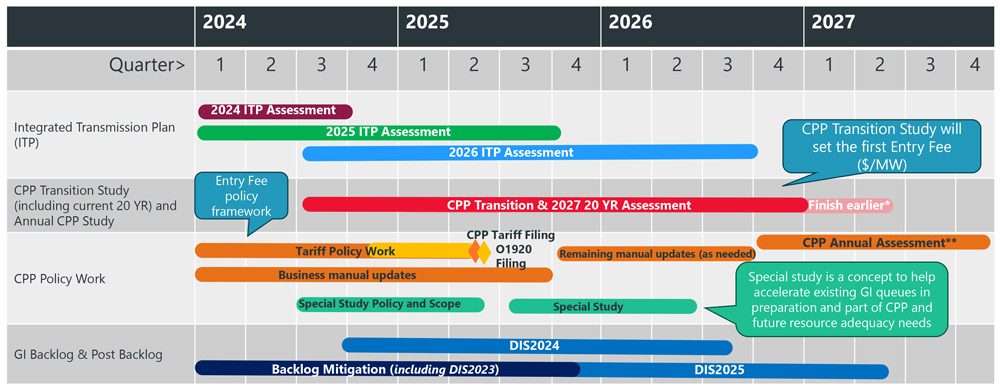In a test of New Jersey’s new environmental justice law, the state Department of Environmental Protection (DEP) has concluded that a controversial proposal to build a gas–fueled generating plant in Newark can move forward, despite the high density of other emissions-generating plants in the area.
The agency, in a decision released July 18, said the plant’s originators, Passaic Valley Sewerage Commission (PVSC), had agreed to include in its plan measures to curb emissions and use limits that would allow the plant to operate only 288 hours a year for testing and maintenance, unless an emergency forced its use.
Because the DEP’s decision requires the sewerage commission, if it goes ahead with the plan as expected, to install pollution controls on existing equipment at the facility, the state’s action “will result in a net overall reduction of air pollutant emissions,” said Commissioner Shawn M. LaTourette at a briefing as the DEP released the decision.
“This is a precedent-setting action,” he said, referring to the way the law was used to cut emissions across the facility. “We believe that this is the kind of result that our environmental justice law was intended to achieve. It’s one that not only avoids casting more pollution upon an overburdened community, but also improves upon the existing conditions by reducing pollution that our neighbors are already experiencing.”
Yet the DEP’s action immediately triggered vigorous pushback from environmentalists and local lawmakers, who have been fighting to stop the project for years.
Food and Water Watch NJ called it an “absolute betrayal to Newark residents” and said the decision “completely undermines” Democratic Gov. Phil Murphy’s “own commitment to protect environmental justice communities and take meaningful climate action.”
“Toxic air pollution from power plants and congestion have plagued our communities for decades, resulting in higher instances of asthma, cancer, cardiovascular disease and developmental disorders,” said state Sen. Renee C. Burgess (D), in a release put out by six legislators. “Just when we thought there was marked progress in combating the new development of these harmful facilities, DEP fails us.”
Competing Goals
The debate underscores the difficulties of the state’s efforts to aggressively cut emissions while ensuring the state has access to enough electricity to meet its needs. In this case, the DEP also sought to balance competing public health concerns: those of the local community that would be affected by emissions from the plant and the threat if the lack of electricity during a disaster meant untreated sewage ran into area waterways.
PVSC, which handles sewage from 48 municipalities and is the sixth-largest waste handling agency in the nation, conceived of the plant after Superstorm Sandy severely flooded the agency’s plant. The emergency shut down the main and backup power sources needed to treat wastewater and triggered the release of 840 million gallons of raw sewage into the nearby Passaic River and Newark Bay.
In response, PVSC seeks to build an on-site emergency standby power generating facility (SPGF) with three 24-MW natural gas combustion turbine generators (CTGs) that is intended to provide power in case of a similar emergency.
The commission’s application said the plant would be used only 3.5 hours a day or 1,285 hours a year. The commission predicted it would use the combustion turbine generators (CTGs) 480 hours a year for storm preparation, 300 hours a year for testing and maintenance, and 24 hours a year for “demand response” during peak hours to offset load. The DEP said PVSC had explored using electricity provided by solar, wind and battery systems to provide emergency backup, but found it would not be feasible, due mainly to onsite space limits.
The DEP’s decision does not grant permission for the plant, but it does specify conditions in the project as it now advances through the DEP’s environmental permitting process. As part of the process, which is expected to take six months, the DEP will compile a draft permit for review by the federal government prior to the state making a final permit decision.
The DEP reviewed PVSC’s plan under an environmental justice law that took effect in June 2023 triggered largely by concerns that communities — especially with a proportion of low-income residents, and those of color — were not being heard in decisions over environmental issues and were, as a result, heavily burdened by polluting facilities.
Murphy, in backing the law, called it a “historic step” that made the state “home to the strongest environmental justice law in the nation.” The law requires applicants seeking to build potentially polluting facilities to dig deeper into the density, history and emissions of other facilities into the area and identify stressors on the community from any proposed facility and the impact on residents.
The PVSC project is the last of three gas-generating plants that until recently were proposed for North Jersey. In October, Competitive Power Ventures (CPV) withdrew its plans for a 630-MW gas-fired generating plant Woodbridge, and in January, NJ Transit dropped plans for a 140-MW emergency resilience gas generator in Kearny. (See New Jersey Abandons Controversial Gas Generation Plant.)
Special Requirements
The DEP’s 16-page decision allowing the PVSC project to “proceed with its proposed permit modification” says the agency’s environmental justice review “has ensured the imposition of special conditions that result in a net overall reduction of facility-wide emissions of air pollutants under regular operating conditions.”
“I don’t expect anyone to praise this outcome,” LaTourette said. “That’s not the business we’re in. … But (it’s) rather to achieve a result that best protects public health and the environment.”
The EJ law enabled the DEP to look “beyond the single source of pollution …. and to look broader at the facility as a whole, to achieve facility-wide reductions in pollution,” LaTourette said. “That additional oversight and authority has resulted in multiple new requirements for PVSC to reduce its existing pollution.”
The requirements, which must be adhered to in the permitting process, included:
-
- limiting the plant’s use — to 48 hours before a storm, to no more than 10 times a year, to emergency “act of God”-type events, and to once a month for maintenance and testing
-
- air pollution control measures — PVSC must remove several existing gas boilers and install state-of-the-art pollution control equipment on four sludge boilers
-
- solar — the agency must install at least 5 MW of solar panels at the facility by the end of 2026
-
- storage — the agency must install at least 5 MW of battery storage capacity at the facility
-
- alternative fuels — the agency must “initiate the transition” of the burners to natural gas or green hydrogen in the near future.
Community Impact
Lawmakers who represent districts that would be impacted by plant emissions demanded a reversal of the decision and highlighted the state’s history of putting polluting facilities in the Newark area. The city is already home to four electricity-generating plants, and pollution levels are elevated by truck traffic on several highways, much of it serving the Port of New York and New Jersey, which also is in Newark.
State Sen. M. Teresa Ruiz (D) called the decision “an indefensible and hypocritical decision that blatantly violates New Jersey’s environmental justice law.”
“It disregards the well-being of Newark residents who have long borne the brunt of toxic air pollution and negative health outcomes from nearby power plants built in their communities to shield more affluent areas from its harmful effects,” she said. “The administration cannot pat itself on the back for pioneering environmental justice policies and promoting environmental education in schools while continuing to harm the environment and the health of its most vulnerable residents.”


